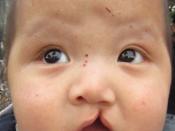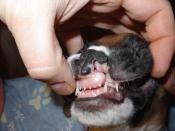Hay well's Syndrome Report
Other names for Hay Wells Syndrome are: AEC Syndrome, Ankyloblepharon-Ectodermal Defects-Cleft Lip/Palate, and Hay-Wells Syndrome of Ectodermal Dysplasia. Hay-Well's Syndrome is one of a group of rare genetic skin disorders known as the Ectodermal Dysplasias. Hay-Well's Syndrome is inherited as a autosomal dominant trait. Heterozygous mutations in the p63 gene are the major cause of EEC syndrome (ectrodactyly-ectodermal dysplasia-cleft lip/palate). Linked studies suggest that the related LMS (limb-mammary syndrome) and ADULT (acro-dermato-ungual-lacrimal-tooth syndrome) syndromes are also caused by mutations in the SAM part of the p63 gene. It has been determined that the p63 gene it is essential for limb and skin development. Using embryonic stem-cell technology to delete the p63 gene, the researchers found that mice that did not have p63 failed to grow skin and legs. They also lacked hair follicles, teeth, and mammary glands -- evidence that their epidermal cells were unable to develop normally.
This is linked to the Hay Well's Syndrome defects. The p63 gene is from the same family of genes as p53, which mutates in almost half of all human cancers. Bradley's lab was the first to demonstrate in 1992 that p53 plays a critical role in cancer (in mice). Due to the similarity in structure of the two genes, the researchers now believe that the p63 gene also plays a significant role in human cancers. Hay-Well's Syndrome may occur for no apparent reason or it may be inherited as an autosomal dominant trait. Human traits, including the classic genetic diseases, are the product of the interaction of two genes, one received from the father and one from the mother. In dominant disorders, a single copy of the disease gene (received from either the mother or father) will be expressed "dominating" the other normal gene and resulting in...


